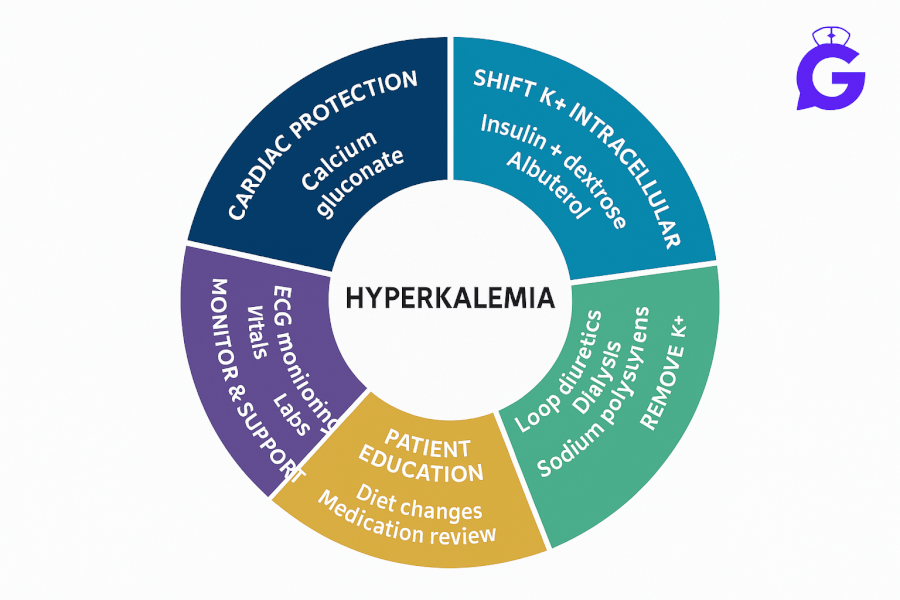As a nursing professional, navigating the complex dynamics of healthcare means you'll inevitably encounter conflict. Whether it's a disagreement between a patient and a care provider, friction among team members, or differing opinions on a treatment plan, conflict is a frequent reality in clinical settings. Understanding and effectively managing these situations isn't just a desirable skill – it's a core competency tested on the NCLEX exam and crucial for a successful, fulfilling nursing career.
This comprehensive guide delves into the nature of conflict in healthcare, explores various management styles, provides actionable strategies, and offers specific tips to help you confidently address conflict-related questions on the NCLEX and apply these skills effectively in your daily practice. Mastering conflict resolution enhances patient safety, improves team collaboration, and contributes to a more positive work environment, aligning with key nursing fundamentals and patient safety principles.
Understanding the Nature of Conflict in Healthcare
Conflict, at its core, is a disagreement or clash between individuals or groups arising from differing needs, values, goals, or perceptions. It's a natural, unavoidable aspect of human interaction. In the high-stress, emotionally charged environment of healthcare, the potential for conflict is amplified.
Common Sources of Conflict in Healthcare Settings:
- Miscommunication & Misunderstandings: Unclear instructions, medical jargon, language barriers, assumptions, or failure to actively listen can easily lead to friction.
- Differing Values & Beliefs: Patients, families, and staff may hold different cultural, religious, or personal beliefs about health, treatment, and end-of-life care.
- Stress and Emotion: Patients and families often experience fear, anxiety, pain, and grief, which can lower tolerance and increase reactivity. Staff face high workloads, emotional exhaustion, and pressure, contributing to potential tension.
- Resource Constraints: Competition for limited resources like staff time, equipment, or private rooms can create conflict.
- Role Ambiguity & Power Dynamics: Uncertainty about roles, responsibilities, or the perceived hierarchy within the healthcare team or between staff and patients/families can be a source of disagreement.
- Dissatisfaction with Care: Perceived lack of attention, disagreement with the treatment plan, unmet expectations, or concerns about quality of care are common triggers.
- Ethical Dilemmas: Situations involving patient autonomy, informed consent, resource allocation, or end-of-life decisions often present complex ethical conflicts, touching upon the core ethical principles in nursing.
🥇Voted #1 Nursing Study Tool.
Personalized AI Tutor + Instant Answers to All Your Questions. 100% Money Back Guarantee!
Conflict: Not Always Negative
It's vital for the NCLEX and your practice to recognize that conflict isn't inherently destructive. When approached constructively, conflict can be a catalyst for positive change:
- Improved Communication: Conflict often forces parties to articulate their needs and perspectives more clearly.
- Stronger Relationships: Successfully navigating conflict can build trust and mutual respect.
- Innovative Solutions: Disagreements can stimulate creative problem-solving and lead to better outcomes.
- Identifying System Issues: Conflicts can highlight underlying problems in processes, policies, or communication pathways that need addressing.
However, unmanaged or poorly handled conflict can have severe negative consequences:
- Compromised Patient Safety: Communication breakdowns can lead to medical errors. Stress and tension can distract providers.
- Decreased Patient Satisfaction: Negative interactions erode trust and satisfaction with care.
- Staff Burnout & Turnover: Chronic conflict contributes significantly to stress, low morale, and staff leaving their positions or the profession.
- Toxic Work Environment: Unresolved conflicts create tension, reduce collaboration, and harm team cohesion.
- Legal and Ethical Issues: Escalated conflicts can lead to formal complaints, lawsuits, or ethical breaches.
Conflict Management Styles: Knowing Your Approach
The Thomas-Kilmann Conflict Mode Instrument (TKI) is a common framework used to understand different approaches to conflict, often tested implicitly or explicitly on the NCLEX. These styles vary based on assertiveness (the extent to which you try to satisfy your own concerns) and cooperativeness (the extent to which you try to satisfy the other person's concerns).
Understanding these styles, their pros and cons, and when they are most appropriate is critical.
1. Avoiding (Unassertive, Uncooperative)
- Description: Sidestepping the issue, withdrawing from the situation, or postponing the discussion. The individual neither pursues their own concerns nor those of the other person.
- Nursing Scenario: A nurse notices two colleagues having a minor disagreement about scheduling preferences but chooses not to get involved, hoping they'll sort it out themselves.
- When Useful: For trivial issues, when emotions are running too high and a cool-down period is needed, when the potential damage of confrontation outweighs the benefits, or when you have little power or chance of success.
- Potential Drawbacks: Issues often remain unresolved and can fester. Important decisions may be made by default. Can be perceived as indifference or lack of engagement. Overuse can hinder team development and problem-solving.
2. Accommodating (Unassertive, Cooperative)
- Description: Neglecting your own concerns to satisfy the concerns of the other person; yielding or self-sacrificing.
- Nursing Scenario: A patient insists on having their bath at a specific time that conflicts with the nurse's planned medication rounds. The nurse rearranges their schedule to meet the patient's preference, even though it causes inconvenience.
- When Useful: When you realize you are wrong, when the issue is much more important to the other person than to you, to build goodwill or social credits, or when preserving harmony is paramount.
- Potential Drawbacks: Your own needs and concerns may go unmet. Can be exploited by others. May lead to resentment over time if consistently used. Can stifle important contributions you might have made.
3. Competing (Assertive, Uncooperative)
- Description: Pursuing your own concerns at the other person's expense; using power, position, or persuasive arguments to 'win'.
- Nursing Scenario: During a code blue situation, the charge nurse gives clear, direct orders to the team, overriding suggestions to ensure rapid, decisive action based on ACLS protocols.
- When Useful: In emergencies requiring quick, decisive action, when enforcing vital rules or policies, or when you know you are right on critical issues impacting patient safety.
- Potential Drawbacks: Can damage relationships and create resentment. May stifle feedback and collaboration. Can escalate conflict if used inappropriately or excessively. Others may feel unheard or devalued.
4. Compromising (Moderately Assertive, Moderately Cooperative)
- Description: Finding a mutually acceptable solution that partially satisfies both parties; seeking a middle ground through give-and-take.
- Nursing Scenario: A patient wants pain medication every 4 hours, but the nurse is concerned about sedation. They agree on assessing the patient every 4 hours and administering medication only if specific pain criteria are met, finding a balance between patient comfort and safety.
- When Useful: When goals are important but not worth the disruption of more assertive modes, when opponents with equal power are committed to mutually exclusive goals, to achieve temporary settlements to complex issues, or as a backup when collaboration or competition fails.
- Potential Drawbacks: Both parties may feel only partially satisfied ("lose-lose"). May lead to suboptimal solutions if a fully collaborative option was possible. Can distract from the merits of the issue by focusing too much on negotiation tactics.
5. Collaborating (Assertive, Cooperative)
- Description: Working with the other person to find a solution that fully satisfies the concerns of both; digging into an issue to identify underlying needs and find a "win-win" outcome.
- Nursing Scenario: A patient refuses a necessary procedure due to fear. The nurse sits down with the patient, actively listens to their fears, provides detailed education, explores alternatives, and involves the physician to adjust the plan in a way that addresses the patient's fears while still achieving the therapeutic goal.
- When Useful: When both sets of concerns are too important to be compromised, when the objective is to learn, to merge insights from people with different perspectives, or to gain commitment by incorporating concerns into a consensus.
- Potential Drawbacks: Requires significant time, energy, and skill from both parties. May be unnecessary for simple or trivial issues. Requires trust and openness.
NCLEX Relevance: Questions may present a scenario and ask you to identify the best initial nursing action or the most appropriate conflict management style given the context, often prioritizing patient safety and therapeutic communication. Collaboration is often ideal, but you must recognize when other styles are necessary (e.g., competing in an emergency). Success here often relates to understanding psychosocial integrity for the NCLEX exam.
Effective Strategies for Managing Conflict in Nursing
Knowing the styles is one thing; applying effective strategies is another. Here are key techniques crucial for both the NCLEX and real-world nursing:
1. Active Listening
- What it is: Fully concentrating on, understanding, responding to, and remembering what is being said, both verbally and nonverbally.
- How to do it:
- Maintain eye contact (culturally appropriate).
- Lean in slightly, use open body language.
- Minimize distractions (find a private space if possible).
- Listen without interrupting (allow pauses).
- Paraphrase to confirm understanding ("So, if I understand correctly, you're feeling frustrated because...").
- Ask clarifying, open-ended questions ("Can you tell me more about what happened?").
- Acknowledge and validate feelings ("I can see why you would be upset about that.").
2. Effective Communication
- What it is: Transmitting information clearly, concisely, and respectfully, while also being receptive to feedback.
- Key Techniques:
- Use "I" Statements: Focus on your own feelings and experiences rather than blaming ("I feel concerned when..." instead of "You always...").
- Be Assertive, Not Aggressive: Express your needs and opinions clearly and respectfully, without attacking or demeaning the other person. Avoid passive (not speaking up) or passive-aggressive communication.
- Maintain Professional Tone: Even when emotions are high, strive for a calm, respectful tone of voice.
- Focus on the Issue, Not the Person: Address the specific behavior or problem, not personality traits.
- Non-Verbal Awareness: Be mindful of your own body language and interpret the non-verbal cues of others.
3. Empathy and Perspective-Taking
- What it is: Understanding and sharing the feelings of another; seeing the situation from their point of view.
- How to practice it:
- Actively try to understand the other person's underlying needs, fears, or motivations.
- Verbally acknowledge their perspective ("It sounds like you're worried about...").
- Show compassion, even if you don't agree with their position.
4. Structured Problem-Solving
- What it is: A systematic approach to resolving the root cause of the conflict.
- Steps:
- Define the Problem: Clearly articulate the issue based on input from all parties.
- Gather Information: Collect relevant facts and perspectives.
- Identify Interests/Needs: Look beyond stated positions to understand what each party truly needs or values.
- Brainstorm Solutions: Generate multiple potential options without judgment.
- Evaluate Solutions: Discuss the pros and cons of each option against objective criteria (safety, policy, fairness, feasibility).
- Select & Implement: Choose the best solution collaboratively and plan its implementation.
- Follow Up: Evaluate the effectiveness of the solution and make adjustments if needed.
🥇Voted #1 Nursing Study Tool.
Personalized AI Tutor + Instant Answers to All Your Questions. 100% Money Back Guarantee!
5. Negotiation and Mediation
- Negotiation: A process of discussion aimed at reaching an agreement. Focus on interests, not positions; generate options for mutual gain; use objective criteria.
- Mediation: Often, the nurse acts as an informal mediator, facilitating communication between a patient and another staff member, or between family members. This involves staying neutral, ensuring both parties are heard, and guiding them toward their own resolution.
6. De-escalation Techniques
- What it is: Strategies used to reduce tension and agitation in potentially volatile situations.
- Techniques: Maintain calm demeanor, use a low, steady tone of voice, respect personal space, listen attentively, acknowledge feelings, set clear limits, avoid power struggles, focus on immediate safety.
7. Setting Boundaries
- What it is: Clearly defining acceptable and unacceptable behaviors to protect yourself and maintain a professional environment.
- How to do it: Communicate limits calmly and assertively ("I understand you're upset, but it's not acceptable to yell at me."). Follow through consistently.
Preparing for NCLEX Conflict Management Questions
The NCLEX exam tests your ability to apply nursing judgment in realistic scenarios. Conflict management questions often fall under the 'Psychosocial Integrity' or 'Safe and Effective Care Environment (Management of Care)' categories. Building effective study habits for nursing success is crucial for tackling these types of questions.
Key Focus Areas for NCLEX Prep:
- Prioritization: Questions may ask for the first or best action. Always prioritize patient safety and therapeutic communication. Addressing the patient's immediate concerns or feelings is often a high priority.
- Therapeutic Communication: Many conflict scenarios require using techniques like active listening, validation, providing information, and using open-ended questions. Recognize non-therapeutic responses (e.g., giving false reassurance, arguing, minimizing feelings).
- Identifying Appropriate Styles: Be able to recognize which conflict management style (avoiding, accommodating, competing, compromising, collaborating) is most suitable for a given situation, considering urgency, importance, and relationship factors. Collaboration is often ideal, but emergencies may require competition (assertiveness).
- Nurse's Role: Understand the nurse's role as a patient advocate, communicator, mediator, and problem-solver.
- Escalation: Know when it's appropriate to involve the charge nurse, nurse manager, ethics committee, or other resources if the conflict cannot be resolved at the current level or involves serious policy/safety violations.
How to Practice:
- Use NCLEX Practice Questions: Seek out questions specifically focused on communication, conflict resolution, difficult patient/family interactions, and interprofessional collaboration. Analyze the rationales carefully.
- Scenario Analysis: Read nursing case studies or reflect on clinical experiences. Ask yourself: What was the conflict? What styles were used? What strategies could have been applied? What would be the best nursing action according to NCLEX principles?
- Role-Playing: Practice communication and conflict resolution techniques with peers or mentors.
- Explore Modern Tools: Consider learning how to use AI to study for the NCLEX as part of your preparation strategy.
Conclusion: Integrating Conflict Management into Your Nursing Identity
Effectively managing conflict among clients, families, and healthcare staff is far more than just an exam topic; it's a fundamental skill that underpins safe, compassionate, and effective nursing care. By deeply understanding the roots of conflict in healthcare, mastering various management styles, and honing practical strategies like active listening, assertive communication, empathy, and problem-solving, you equip yourself for success.
Preparing for the NCLEX requires not just memorizing facts but understanding how to apply these principles in nuanced situations. Remember to prioritize safety, employ therapeutic communication, and choose the most appropriate approach for each unique scenario. Embracing conflict as an opportunity for growth and improved understanding will not only help you excel on the NCLEX but will also empower you to build stronger relationships, foster better teamwork, and ultimately provide superior care throughout your nursing career.







